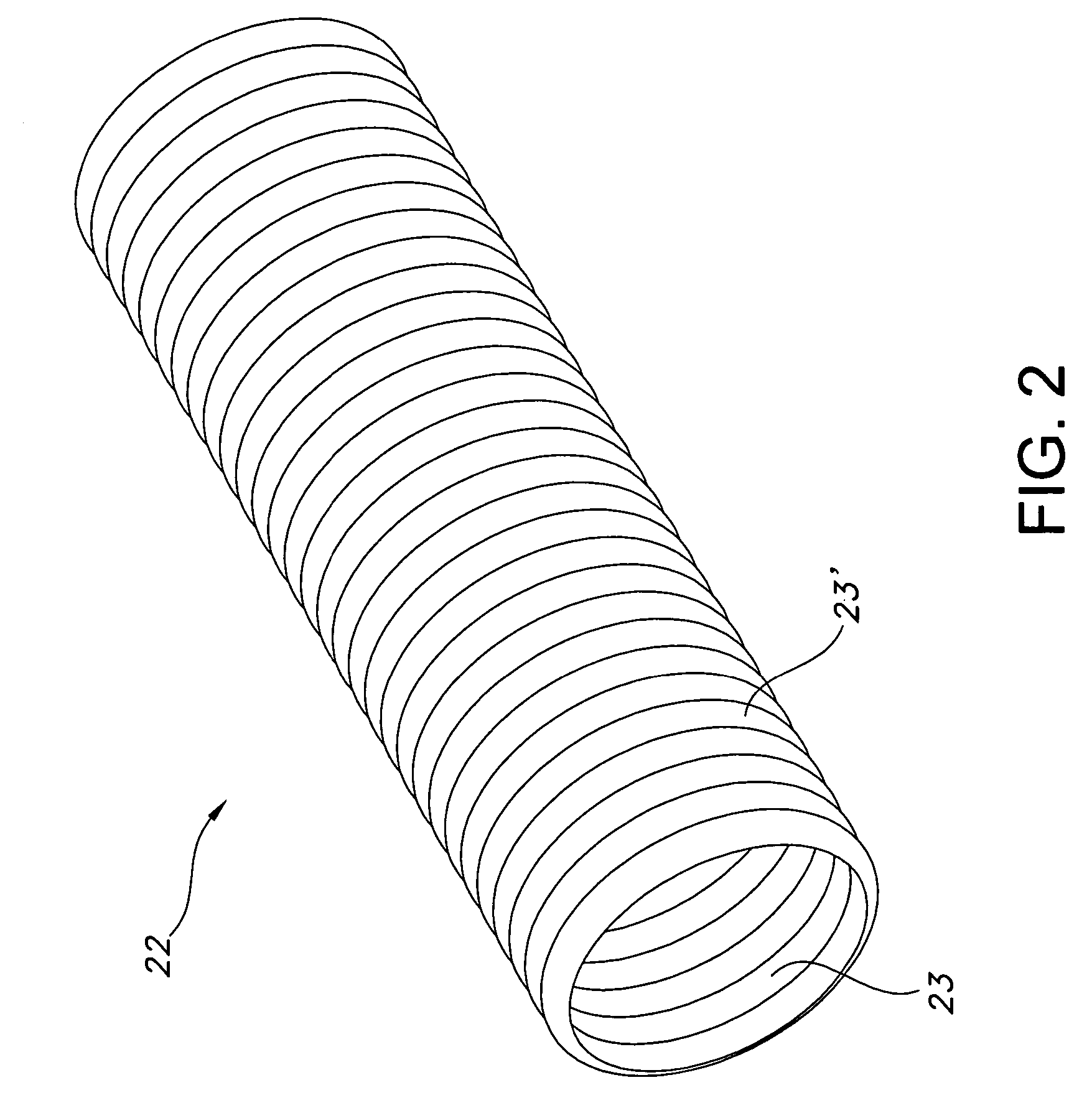Pressure lamination method for forming composite ePTFE/textile and ePTFE/stent/textile prostheses
a technology of pressure lamination and composite eptfe, which is applied in the direction of prosthesis, blood vessels, surgery, etc., can solve the problems of increasing the thickness of the tubular structure, affecting the implantation process, and affecting the implantation effect of the prosthesis,
- Summary
- Abstract
- Description
- Claims
- Application Information
AI Technical Summary
Benefits of technology
Problems solved by technology
Method used
Image
Examples
example 1
Textile / ePTFE Prosthesis
[0125]Textile and ePTFE prosthesis components were pressured laminated in accordance with the present invention to provide a pressure-laminated prosthesis. The pressure laminated device was compared to a similar device, i.e., a control, prepared without pressure lamination.
[0126]Single layered textile grafts were prepared by knitting PET yarns in a two-needle underlap and a one-needle overlap to provide a high stretch tubular graft having a nominal internal diameter of about 13 mm. High stretch ePTFE: tubular members having a nominal tubular diameter of about 13 mm were also prepared. The ePTFE tubular members had a wall thickness of about 175 to about 225 microns. Straight or linear ePTFE tubular members or constructs had from about 800 or greater percent longitudinal expansibility. Bifurcated ePTFE tubular members or constructs had from about 2,000 percent or greater longitudinal expansibility. Corethane® was applied as an adhesive bonding agent to secure t...
example 2
Textile / ePTFE / Stent Prosthesis
[0132]Metal stents (Wallstent®) of about 13 mm in diameter were provided and placed on the above-described 13 mm mandrels. The composite textile / ePTFE prosthesis components from Example 1 were also used as described above (i.e., textile, Corethane® and ePTFE), except that Corethane® was also applied to the stent wires to bond the stent and the ePTFE. Textile, ePTFE and stent prosthesis components were pressured laminated in accordance with the present invention to provide a pressure-laminated prosthesis under the conditions described in Example 1 and a control was also prepared under the conditions described in Example 1.
[0133]The pressure-laminated composite prostheses of the present invention had improved mechanical properties over the control, as detailed below in Table 2.
[0134]
TABLE 2Textile / ePFTE / Stent ProsthesesInventivePressure“Control”LaminatedLaminatedCompositeCompositeMechanical PropertiesDeviceDeviceBond Shear Strength(1)kilograms5.294.30stan...
PUM
| Property | Measurement | Unit |
|---|---|---|
| thickness | aaaaa | aaaaa |
| pressure | aaaaa | aaaaa |
| temperature | aaaaa | aaaaa |
Abstract
Description
Claims
Application Information
 Login to View More
Login to View More - R&D
- Intellectual Property
- Life Sciences
- Materials
- Tech Scout
- Unparalleled Data Quality
- Higher Quality Content
- 60% Fewer Hallucinations
Browse by: Latest US Patents, China's latest patents, Technical Efficacy Thesaurus, Application Domain, Technology Topic, Popular Technical Reports.
© 2025 PatSnap. All rights reserved.Legal|Privacy policy|Modern Slavery Act Transparency Statement|Sitemap|About US| Contact US: help@patsnap.com



